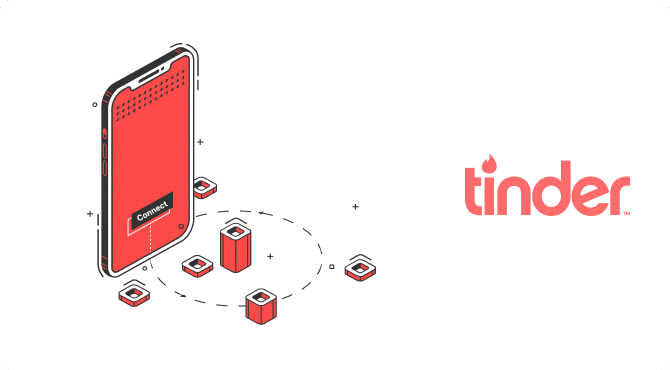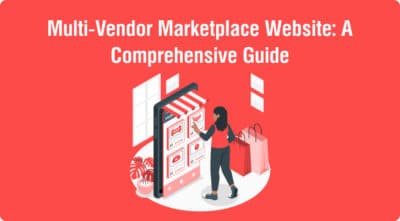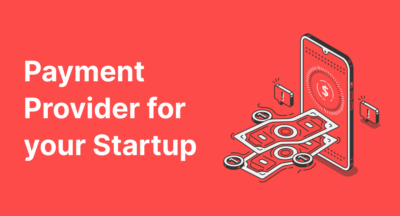How to Build a Dating App like Tinder: Tips, Features, Cost


Dating apps like Tinder, Bumble, and others have become increasingly popular in recent years.
In 2022, there were over 300 million people actively using dating apps all around the world, and around 20 million of them spent money on premium versions/features. It’s safe to say that dating apps have revolutionized how people find companionship, lasting friendships, and love.
The popularity of Tinder and other dating apps can be attributed to a number of factors, including the increasing use of smartphones, the widespread popularity of social media, but especially the fact that online dating is becoming more accepted by the general public, making more people willing to try dating apps.
In this article, we will provide insights into building a dating app similar to Tinder, and by the end of this article, you’ll have learned about the following:
- What makes a successful dating app
- Key features of a successful dating app
- Technical aspects of dating app development
- How much will it cost to build a dating app
And more.
Without further ado, let us dive into the depths of this article to unearth the secrets of creating a successful dating app.
What Makes a Successful Dating App?Before we can build our own successful dating app, we have to learn from the best.
Yet, creating a successful app or website isn’t just about replicating the designs and features of existing apps like Tinder or Bumble but about understanding what makes users tick and meeting their needs.

Here are some factors that make a successful dating app:
- A Large and Active User Base: a critical factor of success of any dating app. The more active user base it has, the wider pool of potential matches its users can access. To capture this large user base, effective marketing and promotion are needed.
- A Rich Set of Features: the dating app should offer a wide range of features to meet the needs of different users. We will discuss the key features a dating app should have in the later section. Innovative features like integrating AI to help users find matches will also attract more users.
- A Secure Environment: this kind of app involves the storing and exchanging of personal (sensitive) data, so data security should be paramount during the dating app development process. The app should have strong security measures in place to protect users’ data privacy and safety.
While creating a successful dating app that connects people and starts relationships is rewarding, you’ll still need effective monetization strategies to ensure the sustainability of your business.
When thinking about monetization, it’s critical to always consider the balance between revenue generation and user satisfaction, and here are some proven monetization models to achieve that:
1. Freemium Model
In this model, we offer a basic version of your app for free, where users can access essential features. You can then offer premium tiers with advanced features and perks for a subscription fee. Premium subscriptions could include perks like unlimited swipes, enhanced visibility, or advanced search filters.
2. In-App Purchases:
Another common monetization model is to sell virtual goods or services (i.e., premium features, virtual gifts, boosts, profile features, etc.) inside the dating app you want to create. We can incorporate virtual currency in selling these goods or services.
3. Ad-Integration:
Allowing other businesses to display non-intrusive ads on the app to users. You can also offer users the ability to remove ads via a premium subscription or an in-app purchase.
4. Organizing Offline Events/Meetups:
Another monetization method is to organize paid meetups or events for users, facilitating in-person connections. This can be an effective way to create additional revenue streams beyond the app.
5. Data Analytics and Insights:
We can sell anonymized user data and insights to other businesses or organizations for marketing/market research purposes. However, if you opt to use this model, make sure to prioritize user privacy and obtain consent (explicitly) for data capture and usage.
What is the best way to monetize the dating app you are building? Ultimately, the answer will depend on a number of factors, such as your target audience, the competition, and the features you offer. Yet, all the methods listed above can work as long as they are implemented correctly.
Remember that it is possible to use a combination of strategies. For example, you can use a freemium model where ads are displayed to the free users but not to the premium users. The premium users will also gain access to the advanced perks via the premium subscription but can purchase more perks (i.e., boosts) as an additional in-app purchase.
Remember that the key to successful monetization is to find a way that is both effective in generating revenue but is non-intrusive to users.
Key Features of a Successful Dating AppBuilding a dating app like Tinder or Bumble that facilitates meaningful connections between users requires carefully curated features that cater to its target audience’s needs.

Although different dating apps may offer their own unique features and perks, here are the essential features all dating apps should have:
1. Profile Creation and Authentication
At the heart and soul of a successful dating app is the verified users. Users need to be able to securely create a profile that accurately represents who they are, and you—the dating platform you’re developing — should have a reliable verification process in place to weed out bots and fake profiles.
Consider:
- Seamless Integration: include various options for users so they can sign up to your platform effortlessly using existing social media profiles (i.e., Google Account, Facebook Account, Apple ID), email, or phone number. Make it as quick and easy as possible for users to register on your platform with a streamlined onboarding experience.
- Visual Appeal: allow users to express themselves through photo uploads. Enable easy editing to help users represent themselves better.
- Authentication: implement robust user authentication mechanisms on the Tinder-like app you’re making, such as phone number confirmation, OTP (one-time password) via text, email verification, and others to weed out fake profiles and bolster user trust.
2. Geolocation and Matching Algorithm
Geolocation is another critical feature in dating apps, allowing users to find and connect with other users who are nearby. Geolocation-based matching can effectively increase the likelihood of real-life interactions.
Some consideration:
- Proximity Precision: make sure to facilitate accurate geolocation to connect users to nearby matches. The more accurate the geolocation function is, the more likely for your users to be engaged for longer.
- Matching Algorithm: the dating app you are creating should have a robust matching algorithm that takes into account user preferences, such as age, interests, behaviors, and more. Make sure to explain the matchmaking algorithm’s mechanics in detail so users can take advantage of it to make sure they are only matched with those who are a good fit for them.
- AI Technology: you can leverage artificial intelligence (AI) and machine learning technologies to amplify matching accuracy. AI-driven algorithms can refine matching based on user interactions, feedback, and ongoing data collection.
3. User Interface
How intuitive and reliable the dating app’s user interface is will be critical for its success.
The Bumble-like app you’re building should be easy to use, and, at the same time, should be visually appealing and engaging. The swiping function has become a hallmark of modern dating apps. Make sure to enable users to use intuitive swiping gestures for liking or disliking profiles.
A combination of intuitive navigation, visual appeal, and seamless transitions between profiles/pages will be the main factor in improving user engagement.
4. Chat and Messaging Features
Since facilitating communication between matched users is essential for any dating app, the dating app you are making should offer a variety of messaging features, especially live chat.
- Real-Time Conversations: emphasize real-time messaging feature that enables users to connect instantly with each other, get to know each other better, and engage in meaningful conversations
- Multimedia Sharing: users should be able to share photos, emojis, GIFs, and other types of multimedia content to make communications more visual and interactive to enhance engagement.
- Privacy and Safety: establish strong privacy protection measures while developing your dating app, and communicate how to make the most of these security features to users. Users should be able to configure their privacy settings to control who can contact them. Prioritize user safety and data security.
5. Advanced Features and Monetization
You can also offer a variety of advanced features (as a form of monetization), such as superlikes and boosts. Superlikes is a premium feature to allow users to signal heightened interests to other users. Boosts, on the other hand, is a feature that increases a user profile’s visibility. You can offer these features as premium options.
Some other unique features you can consider to include are:
- Video Call/Live Video Streaming: this feature allows users to connect with each other in real time while seeing each other’s faces. It is a fairly complex/expensive feature to implement during the development of your dating app, but it can be worth it in improving user engagement.
- Group Chat: you can allow users to chat with multiple other users at the same time (i.e., topic-based, location-based.) Groups can be a great way for users to meet, connect, and match with new people.
- Event and Meetups: facilitate a way for users to find and attend offline meetups and events that are organized by other users in the app.
Creating a successful dating app isn’t just about implementing these basic features but rather about harmonizing all of them to create a seamless and engaging user experience. Ultimately, an engaging user experience will lead to increased satisfaction and retention.
Read Related
The foundation of a successful dating app like Tinder is a robust and secure technical architecture to ensure optimal user experience, seamless functionality, data security, and scalability.
Here is a glimpse into the technological complexities in building a dating app:
1. Choosing a Suitable Technology Stack
In website or app development, a “technology stack” or “tech stack” is a set of technologies like programming languages, software, frameworks, and software that will be used to build and operate the app.
The technology stack encompasses both the front-end and back-end components of the application, defining the entire technical foundation upon which the app is built and operates on.
We can think of technology stacks as a set of building blocks that the developers use to build different layers of the app, from user interface, UX, server-side processing to database management and more.
Some popular technology stacks for dating app development include:
- Back-End: the back-end serves as the “engine” of the app, handling logic and data processing. Some popular technology stacks for back-end development include Python, Java, Node, js, and Ruby on Rails.
- Front-End: front-end refers to the parts of the app the users can see, responsible for handling user interaction and displaying content. Popular tech stacks for front-end development include React, Vue.js, Angular, and Flutter.
- Database: this tech stack layer manages the storage and retrieval of data used by the dating app. Popular database solutions include MySQL, PostgreSQL, Cassandra, Redis, and MongoDB.
- Networking: this layer manages communication between different components of the dating app and external services, including RESTful APIs, GraphQL, or API client libraries like Fetch API and Axios.
2. Server Hosting Service
To ensure data security, optimal loading speed, and reliable service, the app will need to be hosted on a secure server.

Here are some tips for choosing a proper server hosting for the dating app you’re creating:
1. Performance and Scalability:
- Resource Allocation: choose a hosting service that offers dedicated resources like CPU, RAM, and storage. Shared hosting services are more affordable but might lead to slower performance due to resource limitations.
- Scalability Options: choose a hosting service that can follow your app’s growth. For example, as your app’s user base grows, does the hosting service allow you to upgrade resources easily?
- Load Balancing: consider load balancing solutions so you can distribute the workload across multiple servers to ensure consistent performance of the Tinder-like app you’re making during high traffic.
2. Reliability and Uptime:
- Uptime Guarantee: to ensure your app remains accessible to users, choose a hosting provider that offers a high uptime guarantee (at least 99.9%).
- Redundancy: consider hosting providers that offer redundancy features like failover mechanisms, data backup/replication, backup servers, and so on.
3. Security:
- SSL Certificates: make sure the hosting service supports SSL certificates to ensure end-to-end encryption. This is critical for dating apps that normally deal with sensitive information.
- Firewall and DDoS Protection: choose a hosting service that offers robust security measures such as DDoS protection, firewalls, and anti-malware to protect the dating app you’re building against cyber threats.
4. Geographic Location:
Choose a hosting provider with data centers in locations where your target audience is, which will improve the app’s loading speed or reduce latency. Or, choose a hosting service that offers a CDN (Content Delivery Network) feature.
5. Technical Support:
Choose a hosting service that offers 24/7, reliable technical support so you can address any issues promptly.
6. Managed vs. Unmanaged Hosting:
If you or your team don’t have much technical expertise, consider a managed hosting service where the provider handles all the server management tasks. Otherwise, unmanaged hosting is typically more cost-effective and might offer more customization options.
7. Compatibility With Your Tech Stack:
Make sure that the hosting provider supports the technology stack (programming languages, databases, technologies your app is built in.
Last but not least, when comparing different hosting services, make sure to keep your budget in mind. Remember that a cheap hosting service may not always be the best option, as it might come with limitations. Paying more to ensure reliability will be worth it.
Also, make sure to check for any hidden fees, such as extra charges for exceeding bandwidth limits.
Ready to Create Your Dating App?
Contact Us3. Ensuring Data Security and Privacy
Dating apps handle a lot of personal/sensitive data, such as users’ personally identifiable information (PII), photos, and private messages.
It is critical to establish robust security measures on the Bumble-like platform you’re making to secure this sensitive data, including but not limited to the following:
- Using industry-standard end-to-end encryption to ensure data remains indecipherable
- Implementing strict access/authentication controls
- Regularly monitor systems to identify signs of unauthorized access ASAP
- Conducting regular security audits
- Training employees on cybersecurity and data privacy best practices
Other important considerations:
- Compliance With Data Protection Regulations: make sure your app adheres to relevant data privacy regulations, such as the GDPR (General Data Protection Regulation) in the EU. Ensuring compliance is critical to avoid fines and penalties.
- Explicit and Transparent Consent: make sure to have transparent and clear consent mechanisms to ensure that your users are fully aware of what information is being collected by your app, how the data is going to be used, and give them control and flexibility to control their data (i.e., who can view their personal information on the dating app you’re developing.
4. Building Reliable and Scalable Performance
There are two key foundations to success for dating apps:
- First, is about maintaining a reliable, seamless, and satisfying user experience to attract more users.
- Then, as your user base blossoms, the app needs to have the scalability to handle the influx of new users.
Here are some tips to help you achieve reliability and scalability when making a dating app:
- Using Efficient Algorithms: ensuring your dating app is built with efficient algorithms to help reduce the time needed to process requests. Optimal coding can help reduce the amount of time it takes to execute codes.
- Using Optimal Database: using the right type of database that can handle the app’s specific type of workloads.
- Using CDN: a content delivery network can help ensure reliable performance by delivering static content from servers closer to users.
- Cloud Computing: hosting the app in cloud computing platforms such as Google Cloud Platform or Amazon Web Services can allow for better scalability due to easier management and provisioning.
- Microservices Architecture: implementing a microservices architecture allows the app to be broken down into smaller independent services, each can be scaled independently.
- Enabling Caching: caching is the practice of storing frequently accessed data in memory, which can help to improve performance of the dating app you’re creating.
Taking the necessary steps to improve performance and scalability can help you attract and maintain your app’s user base.
It’s important to plan the dating app development for growth from the get-go, preparing the app’s infrastructure and architecture in a way that can be easily scaled.
Monitor the app’s performance on a regular basis so you can identify inefficiency issues and bottlenecks and address them promptly.
How Much Will It Cost to Build Your Dating AppA clear understanding of the financial investment required to build the dating app is essential for its success. In this section, we will have a detailed breakdown of how resources will be allocated and some tips on how to save costs.
Cost Breakdown

The typical cost of building a dating app can be broken down into the following stages:
- Design and Development: including UI/UX design, front-end development, and back-end development. Typically it requires 600 to 1,000 billable hours for each platform (i.e., 600 hours for the iOS app, another 600 for the Android app), resulting in a cost range of $30,000 to $150,000 per platform.
- Testing and Quality Assurance (QA): the cost of testing the dating app you’re making for bugs and ensuring it meets the requirements and quality standards. 100 to 200 hours, leading to a cost between $5,000 and $30,000
- Deployment and Launch: publishing demo, deploying the app to the app stores, and releasing it to the general public. 50 to 100 hours, leading to a cost between $2,500 and $15,000.
- Post-Launch Maintenance and Updates: maintaining the app and ongoing updates, including bug fixing. 20 to 50 hours per month, translating to $1,000 to $7,500 per month.
The average cost of building a dating app ranges between $50,000 to $150,000, but the actual cost can vary depending on the factors we’ll discuss below.
Factors Influencing Development Cost
The cost of building a dating app can be influenced by a number of factors, including:
- Design Complexity and Customizations: the more intricate the app’s design and the more customized elements used can require significantly more design time and expertise, translating into a higher cost.
- The Number of Platforms: developing the dating app to more platforms (iOS, Android, web platforms, etc.) may require individualized development time and more testing phases, which naturally increases costs.
- Features: the more features and functionalities you intend to incorporate in your app will determine its costs.
- Integration: enabling integration with third-party services like payment gateways, analytics tools, and other solutions may add to the overall costs.
Read Related
A2 Design is an experienced full-cycle web and mobile application development company with clients from all around the world. Our team has over a decade of experience in developing custom applications across various industries, including healthcare, retail, and marketplaces. Our approach is simple: we strive to efficiently bring our client’s ideas to life in the most cost-effective and time-efficient way.
A2 Design has already developed custom dating apps for our previous clients, and we offer a variety of benefits for every client building a Tinder-like app:
- Proven Track Record: with over ten years of experience and a trail of satisfied clients, A2 Design ensures your dating app benefits from our proven track record.
- Dating App Specialization: our team has a deep understanding of the nuances of developing a dating app. We’ll make sure that your solution is tailored to meet the unique needs of this dynamic and evolving market.
- Full-Cycle Excellence: A2 Design will be your partner throughout the entire dating app development journey, from ideation to deployment to post-launch.
- Customization and Scalability: we understand that every dating app is unique. We customize your app to reflect your brand’s vision and mission and user experience goals. Our solutions are designed for scalability and will be able to accommodate your growing user base without compromising performance.
- Cost-Effective Excellence: A2 Design understands the value of your investment. We will eliminate unnecessary expenses to develop an app that offers maximum impact within your budget.

- How to Build a Job Search Website Like Glassdoor
- How to Build a Real Estate Website Like Zillow
- How to Build a Website Like eBay: A Complete Development Guide
- How to Build a Website like Turo: Tips, Features, Costs
- How to Create an e-Learning Website Like Udemy or Coursera
- How to Make a Website Like Airbnb
- How to Make a Website Like Etsy: Cost, Features, and More



